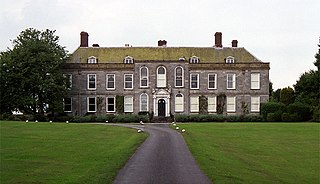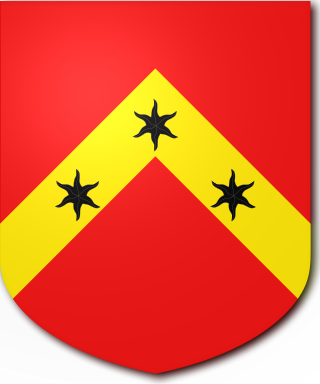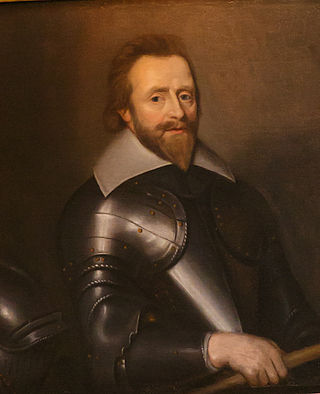Related Research Articles

Baron Kilmaine is a title that has been created twice, both times in the Peerage of Ireland. The first creation came in 1722 in favour of the soldier the Hon. James O'Hara. Two years later he succeeded his father as Baron Tyrawley. However, both titles became extinct on the second Baron Tyrawley's death in 1773 without legitimate sons.

There have been three baronetcies created for members of the Bacon family, all in the Baronetage of England. As of 2008, one creation is extinct and two of the creations are extant. The extant titles have been merged since 1755.
Sir Charles Hilton Seely, 2nd Baronet, VD, KGStJ, was a British industrialist, landowner and Liberal Unionist politician who served as Member of Parliament (MP) for Lincoln from 1895 to 1906 and for Mansfield from 1916 to 1918. He was a Justice of the Peace for Hampshire and Nottinghamshire and the Deputy Lieutenant for Nottinghamshire. He was also a Knight of Grace of the Order of St John.

Sir Walter St John, 3rd Baronet, of Lydiard Tregoze, Wiltshire, and of Battersea, was an English Member of Parliament.

Earl of Bellomont, in the Kingdom of Ireland, was a title that was created three times in the Peerage of Ireland. The first creation came on 9 December 1680 when Charles Kirkhoven, 1st Baron Wotton, was made Earl of Bellomont. He had already been created Baron Wotton, of Wotton in the County of Kent, in the Peerage of England on 31 August 1650. He was childless and both titles became extinct on his death in 1683.

James Hamilton, 6th Earl of Abercorn, PC (Ire), was a Scottish and Irish peer and politician. Appointed a groom of the bedchamber to Charles II after his father's death in battle, he took the Williamite side at the Glorious Revolution and in March 1689 supplied Derry with stores that enabled the town to sustain the Siege of Derry until it was relieved in August. Shortly after inheriting a Scottish and Irish peerage from a second cousin, he was created a viscount in Ireland for his services to the Williamite cause.

Sir Edward Acton, 1st Baronet was an English MP for Bridgnorth and High Sheriff of Shropshire, who supported Royalist cause during the English Civil War.
Sir Arthur Gore, 1st Baronet was an Irish soldier and politician.
There have been three baronetcies created for persons with the surname Everard, one in the Baronetage of Ireland, one in the Baronetage of England and one in the Baronetage of the United Kingdom. Only one creation is extant as of 2010.

The Carr Baronetcy, of Sleaford in the County of Lincolnshire, is a title in the Baronetage of England. It was created on 29 June 1611 for Edward Carr who was Sheriff of Lincolnshire in 1614. The 3rd Baronet was Chancellor of the Duchy of Lancaster and a Member of Parliament for Lincolnshire in the House of Commons.
There have been two baronetcies created for members of the Wolseley family, one in the Baronetage of England and one in the Baronetage of Ireland. As of 2018, the Wolseley Baronetcy of Mount Wolseley is dormant.
There have been three baronetcies created for persons with the surname Noel, two in the Baronetage of England and one in the Baronetage of Great Britain. One creation is extant as of 2008.
There have been two baronetcies created for persons with the surname Pakington, one in the Baronetage of England and one in the Baronetage of the United Kingdom. The latter is extant as of 2023.

There have been two baronetcies created for members of the Coote family. The first is Coote of Castle Cuffe, while the second is Coote of Donnybrooke, both in the Baronetage of Ireland. As of 2020, the first creation is still extant. The holders of the first creation also held the title of Earl of Mountrath between 1660 and 1802.

Sir Andrew Agnew, 7th Baronet was a Scottish politician and a prominent promoter of Sunday Sabbatarianism, which brought him to the notice of Charles Dickens who criticised both his cause and his character.
Sir Thomas Beaumont, 1st Baronet was an English politician.
Sir Valentine Browne, 1st Viscount Kenmare and 3rd Baronet Browne of Molahiffe (1638–1694), was an Irish Jacobite who fought for James II of England in the Williamite War in Ireland.
Sir Clobery Noel, 5th Baronet, of Kirkby Mallory, Leicestershire, was an English Tory politician who sat in the House of Commons from 1727 to 1734.
Sir Charles Wheler, 2nd Baronet of Birdingbury, Warwickshire, was an English cavalry officer who served in the English and Spanish armies. In 1667 he was elected a Member of Parliament for the constituency of Cambridge University.

Sir Charles Yate, 3rd Baronet was an English landowner.
References
- ↑ His name is spelt in different ways including Sir Oliver St. George, Sir Oliver Saint-George and Sir Oliver Saint George
- 1 2 3 Burke & Burke 1838, p. 461.
- ↑ Lundy 2013 , p. 12957 § 129568 cites Mosley 2003 , p. 3478
- ↑ Brewer 1825, pp. 16–17.
- 1 2 3 4 Cokayne 1903, p. 120.
- ↑ Leigh Rayment's list of baronets – Baronetcies beginning with "S" (part 1)
- ↑ "Privy Council of Ireland". Leigh Rayment's Peerage Pages. Archived from the original on 7 June 2008.
{{cite web}}: CS1 maint: unfit URL (link) - ↑ "Vice Admirals of the Coasts from 1660". Institute of Historical Research. Archived from the original on 28 September 2006. Retrieved 13 February 2019.
- ↑ Cokayne 1903 , p. 120states Sr Oliver's will was dated 20 May 1695 proved 3 January 1696.
- ↑ Lundy 2009 , p. 2957 § 129568 cites Mosley 2003 , p. 3270